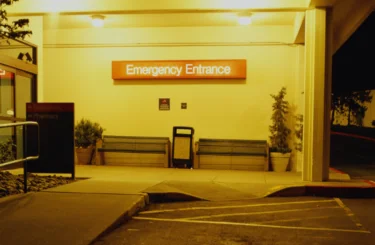
Bedsores Can Be Deadly If Not Treated Promptly
Nursing home patients spend a lot of time in their beds, which puts these patients at a greater risk for developing bedsores. If not recognized and treated immediately, bedsores can quickly turn into serious infections — and can even be deadly.
According to the Centers for Disease Control, one in ten nursing home patients suffers from bedsores or pressure sores (medically known as decubitus ulcers). Bedsores may be a sign of nursing home neglect, particularly when the patient did not have any sores when admitted to the facility.
If not promptly discovered and treated, bedsores can rapidly progress into life-threatening infections. When this happens, the nursing home may be liable for negligence.
What Are Bedsores and How Are They Treated?
Bedsores are skin lesions caused by direct pressure on the bony areas of the body. They develop quickly, advance rapidly, take a long time to heal, and are susceptible to infection.
Bedsores are categorized in four stages:
- Stage 1 – Simple, persistent reddened area on the skin, coupled with a change in skin temperature.
- Stage 2 – Shallow ulcer that may look like a blister or abrasion.
- Stage 3 – Deep, open ulcer with subcutaneous fat possibly visible, resembling a crater.
- Stage 4 – Deep, open wound with muscle, bone, and connective tissue visible.
Stage 1 and 2 bedsores usually heal with conservative treatment, including relieving the pressure that caused the sore. Bedsores that have progressed to Stage 3 or 4 require more aggressive measures, including wound-care treatment, where the infected tissue is removed and the area is bandaged.
Some nursing home patients undergo surgery to treat their bedsores. This, however, often results in complications for elderly patients. Even if the patient survives the procedure, recovery is painful and difficult.
Preventing Bedsores
Nursing home staff can help prevent bedsores by:
- Routinely checking patients’ skin for signs of sores.
- Regularly turning and repositioning patients.
- Using pressure relieving devices to inhibit the development of bedsores.
- Maintaining a nutritious diet for patients.
Nursing homes are required to take these steps to prevent bedsores and are obligated to identify at-risk patients. Nursing homes are also required to create care plans for patients who develop bedsores, with specific steps for addressing how to rotate the patient’s body and how to keep the bedsores from becoming more severe.
Unfortunately, nursing home personnel frequently overlook bedsores. This is because staff are not always trained to identify them, especially in the early stages, and many nursing homes don’t have enough employees to regularly check patients.
What if a patient enters a nursing home already suffering from bedsores? Then it is the facility’s responsibility to make sure the sores don’t get worse. For many of these patients, however, their pre-existing bedsores will progress to a more serious stage, creating a brand-new set of medical problems.
Andy Dragovic
Andy Dragovic is a member of Sommers Schwartz's Personal Injury and Medical Malpractice Groups. His practice is 100% dedicated to helping victims get compensation for their injuries and losses.





